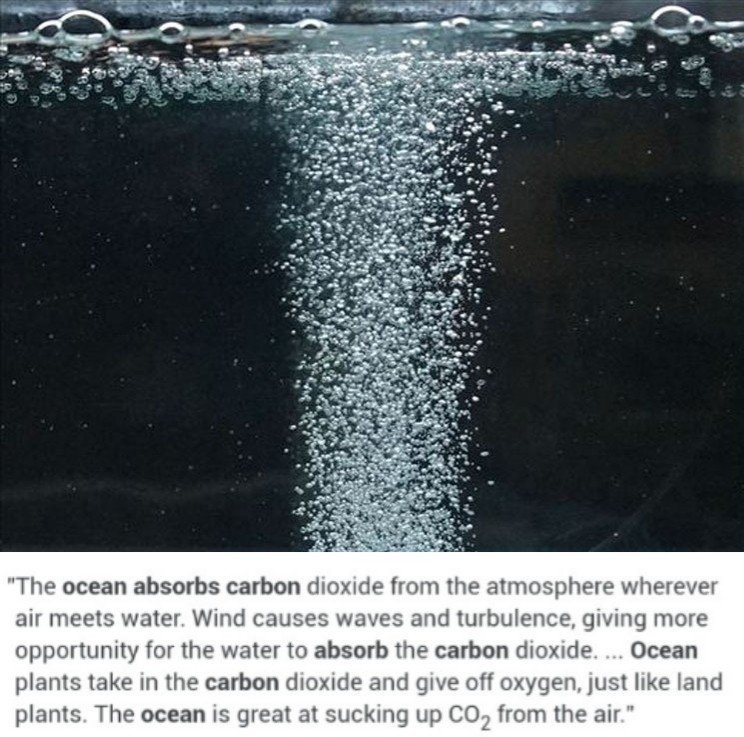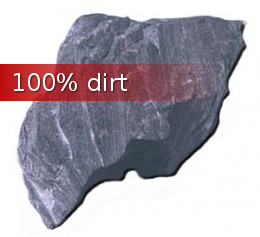FDA / CFIA approved genetically modified foods revealed to be unfit for human consumption.
Heinous Crimes, Latest news, World news Sunday, July 31st, 2011
The Noah’s Ark for the unmodified food staples of the World
Unmodified seeds are currently being gathered and stored in an arctic storage facility in Greenland called the Svalbard Global Seed Vault. This seed bank does NOT contain any genetically modified seeds. The vault was built as a Noah’s ark type facility where they are keeping huge samples of the World’s natural unmodified seeds and crops preserved. It’s the last line of defense against extinction for all the natural unmodified crops we have. Natural and unmodified crops that are essential for the survival of mankind. Crops such as eggplant, lettuce, barley, potato, maize (corn), rice, wheat, cowpea and sorghum.
Why build a Noah’s Ark Seed Vault? Because GMO crops are now confirmed to be a major threat to mankind. GMO crops are destroying our food supply and GMO crops have now been proven to be the source that is causing the World population to become sick with diseases such as autism, diabetes, asthma, cancer, heart disease, Morgellons Disease, birth defects and liver tumors. Drug and chemical giant Bayer AG has admitted that there is no way to stop the uncontrolled spread of its genetically modified crops. Bayer AG has stated that they can’t keep the GMO plants separate and can’t keep them from cross contaminating with un modified crops. Pretty soon the natural unmodified version of the food we grow will become extinct and everything available will be only modified poison versions. Bayer AG and the world’s biggest seed company, Monsanto, are now being sued by many European governments and thousands of farmers around the World for contaminating their unmodified crops. Countries like Germany, France, Hungary and Austria have all started to ban GMO seeds.
The American Academy of Environmental Medicine (AAEM) called on “Physicians to educate their patients, the medical community, and the public to avoid GM (genetically modified) foods when possible and provide educational materials concerning GM foods and health risks.” They called for a moratorium on GM foods, long-term independent studies, and labeling.
The AAEM stated, “Several animal studies indicate serious health risks associated with GM food,” including infertility, immune problems, accelerated aging, insulin regulation, and changes in major organs and the gastrointestinal system. They conclude, “There is more than a casual association between GM foods and adverse health effects. There is causation,” as defined by recognized scientific criteria. “The strength of association and consistency between GM foods and disease is confirmed in several animal studies.”
An article written 20 May 2011 in the The Telegraph reported that Scientists at the Department of Obstetrics and Gynaecology, at the University of Sherbrooke Hospital Centre in Quebec have found toxic pesticides which are implanted into genetically modified food crops have lodged in the blood of pregnant women and their unborn babies. The findings appear to contradict the GM industry’s long-standing claim that any potentially harmful chemicals added to crops would pass safely through the body.
A study of the health risks of genetically modified (GM) corn, approved for consumption by the United States FDA (Food and Drug Administration) and Canadian Food Inspection Agency has revealed signs of hepatorenal toxicity. CRIIGEN performed a counter evaluation of Monsanto’s regulatory study on rats fed MON863 GMO (genetically modified organisms) corn for three months. This study was used to authorize the international sale of this corn. The symptoms discovered during this counter evaluation are coherent, and observed in control rats of the same genetic strain, same age, and raised in strictly identical conditions. The rats were fed a diet of chemical composition considered to be equivalent, but without the toxin Bt, which is the insecticide that is self-produced by the GMO corn. On average, the female rats experienced weight gain, significant increases in sugar and fat levels in the blood, disruption of renal functions and an increase in kidney weight compared to the rest of the body. Inversely, male rats lost weight, their kidneys become more sensitive and lost weight compared to the rest of the body. Additionally, ion analyses were modified in urine, which is likely related to the diagnosed nephropathies. Rats do develop this naturally with age, but the rats used in this case were young (5 months old at the end of the study). Some hepatic function markers were also affected. It is important to note that toxic products such as pesticides, as in initial stages of cancer, often provoke different effects depending on gender. It is not possible, through such short-term tests, to identify the beginning of any particular disease. But it was “detoxification” organs, as they are traditionally referred to, that reacted in this study.
Variations in the animals’ weights were not statistically studied by Monsanto, which published on the subject in 2006, nor were the data on urinary chemistry. The statistics were not explored further and their protocols are highly debatable.
Studies indicate that 2 percent of adults and 8 percent of children have food allergies. Inhaling pollen from GM crops is creating new threats that need to be researched and evaluated. In a 1999 statement posted on Soy Info Online, Joe Cummins, professor emeritus of genetics at the University of Western Ontario says that “GM pollen is likely to open an extended range of allergy and may cause autoimmune disease or other kinds of toxicity.”
Studies indicate that residues of glyphosate in foods may increase the incidence of certain cancers, including non-Hodgkin’s lymphoma. Bovine growth hormone (rBGH) found in most milk (unless the package notes otherwise) has been linked to breast cancer and diabetes. Transgenic cotton contains Bromorynil (brand name Buctril), which causes birth defects and is suspected as a cause of liver tumors. Cottonseed oil is found in many food products — another reason to read labels.
It took 60 years of Dichloro-Diphenyl-Trichloroethane (or DDT) use for its health hazards to be recognized by the government and for it to be banned in the United States.
Prince Charles of Great Britain is an outspoken anti-GE advocate. The U.S. Food and Drug Administration consistently maintains that GE foods are safe. Margaret Miller, former lab supervisor for Monsanto, helped the company develop rBGH. She left the company to become the deputy director of Human Food Safety and Consultation services at the FDA, where she helped push through FDA approval for rBGH.
Consumers are calling for more safety guidelines. In January 2001, the Consumer Federation of America, a coalition of 270 consumer groups — including the American Association of Retired People — called on President George W. Bush and Congress to label biotech food and to require strict safety and environmental testing. In a 250-page report financed by a grant from the prestigious Rockefeller Foundation, the federation said the United States government has basically abandoned its responsibility to ensure the safety of genetically engineered foods. The report also calls for the end of a government policy that holds that GE foods are substantially equivalent to their non-GE counterparts.
Some politicians are speaking out. When he introduced the Genetically Engineered Food Right To Know Bill in 2001, Congressman Dennis Kucinich, D-Ohio, noted that “Government has a moral and legal responsibility to ensure the safety and purity of our food supply. We cannot abdicate this responsibility to global corporations whose goals may be limited to profit-making.”
Congressman Jack Metcalf, R-Wash., joined Kucinich and a bipartisan group to cosponsor HR 3883, the GE Safety Testing Bill. He has been quoted as saying, “I am not convinced that enough research has been conducted to determine the long-term health effects of genetically modified foods, and I believe that American citizens should have the right to know what they are eating.”
So what is an alternative solution? Stop messing around with mother nature. Stop messy around with our food sources. If farmers want a better return for their labor modifying the food staples is not the answer. Modifying your market is the answer. Now that modified corn has been proven to be unsafe for both human and animal consumption the most profitable solution for farmers is to grow corn as a source of renewable ethanol fuel. The benefits of ethanol fuel are not only limited to providing larger profit shares for farmers ethanol fuel is a benefit to the environment and the process of making ethanol generates a series of valuable co-products including corn oil, protein feed, gluten meal, germ, refined starches, corn sweeteners and commercial carbon dioxide. The value of the final products is roughly double that of the raw corn.
The strongest arguments for using unmodified corn for ethanol production is that it is a cleaner burning fuel. Ethanol’s oxygen content helps gasoline burn more efficiently, cutting tailpipe pollutants including carbon monoxide and benzene. Over 99% of fuel ethanol in the US is sold as E10, a 10% blend with gasoline. But E85, an 85% blend, is beginning to emerge. The big three US automakers annually sell around 250,000 flexible fuel vehicles capable of running on both E10 and E85 fuel blends, both at no added cost to buyers.
How will ethanol fuel made from unmodified corn help the environment? E10 fuel blends can cut carbon monoxide emissions by 20%, benzene emissions by 25% and overall gasoline toxicity by 30%. Imagine what an E85 ethanol fuel blend can do to help reduce carbon monoxide emissions, reduce cancer causing benzene (The Department of Health and Human Services (DHHS) has determined that benzene causes cancer in humans. Benzene is also the cause of AIDS. You can not cure AIDS until you shut off the continued exposure to benzene) emissions and overall gasoline toxicity. The good news is that clean ethanol fuel made from corn is a renewable fuel source. If we used only corn for ethanol production the oil companies cannot falsely argue that by producing more ethanol fuel we will be causing the starvation of millions of people and or be responsible for higher food costs. Seriously, how many times do you buy corn when you go shopping for the food you and your family needs? Most, myself included, only buy corn when it is in season. Now that they’ve modified it I will no longer buy corn. I am no fool.
I know other countries use corn as their main food staple or one of their main food staples. So how will this affect them? Again I must point out that all genetically modified foods, including corn, that the US and Canada is growing isn’t fit for human consumption. That means not fit for human consumption not just in the US and Canada but anywhere on Earth. So the solution? Instead of wasting billions of bushels of genetically modified corn that has already been grown and harvested use it all as a fuel. Once this vial corn has been eradicated World wide then plant unmodified corn for both human consumption as a food and a fuel. Like Mother Nature make corn production a harmonious balance – grown first and foremost as a food source and only the excess used as a fuel source.
The oil companies are threatened whenever someone seeks alternative fuel sources – cleaner fuel sources. Ethanol is a threat to their $billion mass polluting industry. Of course they are going to blame you and I and terrorize you and I. They will and have spent $billions in bribes of politicians and regulatory board members. They will spare no effort or cost to discredit any research and report that unequivocally proves that ethanol made from corn is probably the single greatest solution to meet all of our fuel needs, now and for generations to come.
To the Navajo, corn is freedom, a gift from the Mother Earth. Corn pollen is a symbol of fertility and of renewal. Its use brings you back into balance and harmony with life.
Clayton Brascoupé, program director of the Traditional American Farmers Association of New Mexico and Arizona, says, “Corn is our Mother. A mother does things for us, feeds us, provides medicine. We have a responsibility to Mother Corn to treat her in a respectful manner.”
We don’t know the long-term effects of eating transgenic food. Do we want to be guinea pigs for biotech researchers? How will this affect our children, our grandchildren and the human race?
Today, human genes are being inserted into plants and animals. Should we be “playing” with the building blocks of life? Do we as humans have the right to undo or meddle with a system that has taken thousands of years to evolve? I firmly believe the answer is a definitive and resounding no. Only fools play with fire. The wise know better.
Corn can wipe out the Afghan Opium drug trade
Corn is also the solution for the Afghan people. The US invasion of Afghanistan is directly responsible for the rejuvenation of the Opium drug trade in Afghanistan. The US refuses to eradicate the Opium fields and they falsely declare that without the illegal Opium field and drug trade the Afghan people will not survive. The US are the sole beneficiaries of the illegal Opium grow ops and trade. The Opium is used to finance the CIA and their illegal covert operations around the World.
What you haven’t been told is that in Afghanistan the US and British troops have eradicated corn fields (yes you read right – corn fields) in order to plant Opium. If Canadian troops started to eradicate the Opium fields and started shipping unmodified corn seeds to Afghanistan then the Canadian soldiers could truly begin to help the Afghan people. The Afghan people can not feed their families with Opium plants. The Afghan people can feed their families with corn. Any excess corn can be used to make fuel to heat their homes and fuel their farming, construction and industrial equipment and machinery. The Afghan people can begin to grow and prosper just by eradicating the Opium fields and planting corn instead. That would be the greatest gift that Canada could give to the Afghan people.
Short URL: https://presscore.ca/news/?p=979

 The Halifax International Security Forum was founded in 2009 as a propaganda program within the German Marshall Fund (founded June 5, 1972 by West German Chancellor Willy Brandt) by the Crown in Canada using Crown Corp ACOA & DND funds. The Halifax International Security Forum is a front that is used to recruit top US, UK and Canadian gov and military officials as double agents for Canada's WWI, WWII enemy and wage new Vatican Germany Cold War.
High Treason: s.46 (1) Every one commits high treason who, in Canada (c) assists an enemy at war with Canada, ..., whether or not a state of war exists". Every one who, in Canada assists Canada's enemies wage "piecemeal WWIII" Cold War by organizing, funding and participating in the Germany government politically and militarily benefitting / lead Halifax International Security Forum is committing high treason.
The Halifax International Security Forum was founded in 2009 as a propaganda program within the German Marshall Fund (founded June 5, 1972 by West German Chancellor Willy Brandt) by the Crown in Canada using Crown Corp ACOA & DND funds. The Halifax International Security Forum is a front that is used to recruit top US, UK and Canadian gov and military officials as double agents for Canada's WWI, WWII enemy and wage new Vatican Germany Cold War.
High Treason: s.46 (1) Every one commits high treason who, in Canada (c) assists an enemy at war with Canada, ..., whether or not a state of war exists". Every one who, in Canada assists Canada's enemies wage "piecemeal WWIII" Cold War by organizing, funding and participating in the Germany government politically and militarily benefitting / lead Halifax International Security Forum is committing high treason.
 Please take a moment to sign a petition to
Please take a moment to sign a petition to 









































 1917 Code of Canon Law, Canon 185 invalidates (voids) all papacies since October 26, 1958 due to the fact Cardinal Giuseppe Siri was elected Pope on the Third ballot on Oct 26 1958 but the new Pope Gregory XVII was illegally prevented from assuming the office. A Pope was elected on October 26, 1958. Thousands of people witnessed a new Pope being elected by seeing white smoke and millions were informed by Vatican radio broadcasts beginning at 6:00 PM Rome time on October 26, 1958. The papacy of Francis, Benedict, John Paul II, John Paul I, Paul VI, John XXIII and any and all of their respective doctrines, bulls, letter patents and the Second Vatican Council are all invalidated (having no force, binding power, or validity) by Canon 185 because the 1958 conclave of cardinals elected Cardinal Giuseppe Siri Pope on Oct 26 1958. Cardinal Giuseppe Siri accepted the papacy by taking the name Pope Gregory XVII but was illegally prevented from assuming his elected office.. According to Canon 185 Cardinal Angelo Giuseppe Roncalli illegally assumed the papacy 2 days later by fraud and grave fear, unjustly inflicted against Cardinal Giuseppe Siri who was lawfully elected Pope Gregory XVII. Because no Pope has been lawfully elected since October 26, 1958 the Holy See (la Santa Sede/Seat) remains vacant.
1917 Code of Canon Law, Canon 185 invalidates (voids) all papacies since October 26, 1958 due to the fact Cardinal Giuseppe Siri was elected Pope on the Third ballot on Oct 26 1958 but the new Pope Gregory XVII was illegally prevented from assuming the office. A Pope was elected on October 26, 1958. Thousands of people witnessed a new Pope being elected by seeing white smoke and millions were informed by Vatican radio broadcasts beginning at 6:00 PM Rome time on October 26, 1958. The papacy of Francis, Benedict, John Paul II, John Paul I, Paul VI, John XXIII and any and all of their respective doctrines, bulls, letter patents and the Second Vatican Council are all invalidated (having no force, binding power, or validity) by Canon 185 because the 1958 conclave of cardinals elected Cardinal Giuseppe Siri Pope on Oct 26 1958. Cardinal Giuseppe Siri accepted the papacy by taking the name Pope Gregory XVII but was illegally prevented from assuming his elected office.. According to Canon 185 Cardinal Angelo Giuseppe Roncalli illegally assumed the papacy 2 days later by fraud and grave fear, unjustly inflicted against Cardinal Giuseppe Siri who was lawfully elected Pope Gregory XVII. Because no Pope has been lawfully elected since October 26, 1958 the Holy See (la Santa Sede/Seat) remains vacant.
 Hold the Crown (alias for temporal authority of the reigning Pope), the Crown appointed Governor General of Canada David Lloyd Johnston, the Crown's Prime Minister (servant) Stephen Joseph Harper, the Crown's Minister of Justice and Attorney General Peter Gordon MacKay and the Crown's traitorous military RCMP force, accountable for their crimes of treason and high treason against Canada and acts preparatory thereto. The indictment charges that they, on and thereafter the 22nd day of October in the year 2014, at Parliament in the City of Ottawa in the Region of Ontario did, use force and violence, via the staged false flag Exercise Determined Dragon 14, for the purpose of overthrowing and besieging the government of Canada contrary to Section 46 of the Criminal Code. In a society governed by the rule of law, the government and its officials and agents are subject to and held accountable under the law. Sign the online
Hold the Crown (alias for temporal authority of the reigning Pope), the Crown appointed Governor General of Canada David Lloyd Johnston, the Crown's Prime Minister (servant) Stephen Joseph Harper, the Crown's Minister of Justice and Attorney General Peter Gordon MacKay and the Crown's traitorous military RCMP force, accountable for their crimes of treason and high treason against Canada and acts preparatory thereto. The indictment charges that they, on and thereafter the 22nd day of October in the year 2014, at Parliament in the City of Ottawa in the Region of Ontario did, use force and violence, via the staged false flag Exercise Determined Dragon 14, for the purpose of overthrowing and besieging the government of Canada contrary to Section 46 of the Criminal Code. In a society governed by the rule of law, the government and its officials and agents are subject to and held accountable under the law. Sign the online  Two of the most obvious signs of a dictatorship in Canada is traitorous Stephen Harper flying around in a "military aircraft" and using Canadian Special Forces "military" personnel from JTF2 and personnel from the Crown's traitorous martial law "military" RCMP force as his personal bodyguards.
Two of the most obvious signs of a dictatorship in Canada is traitorous Stephen Harper flying around in a "military aircraft" and using Canadian Special Forces "military" personnel from JTF2 and personnel from the Crown's traitorous martial law "military" RCMP force as his personal bodyguards.





































Transgenic corn is corn that contains one or more genes from the soil bacterium Bacillus thuringiensis, or Bt as is commonly used. Bacillus thuringiensis (B.t.) is a live microorganism. In a purified form, some of the proteins produced by B.t. are acutely toxic to mammals. B.t. is closely related to B. cereus, a bacteria that causes food poisoning and to B. anthracis, the agent of the disease anthrax. Large-scale applications of B.t. can have far-reaching ecological impacts. B.t. can reduce dramatically the number and variety of moth and butterfly species, which in turn impacts birds and mammals that feed on caterpillars. In addition, a number of beneficial insects, such as bees, are adversely impacted by B.t. B.t. is now killing off the entire bee population in the United States.